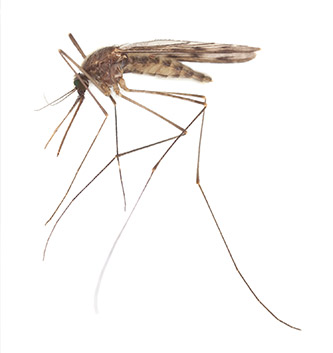Modeling the Spread of Malaria
Malaria, a mosquito-borne disease, continues to afflict many countries. In 2012, the World Health Organization estimated 207 million malaria cases occurred, resulting in an estimated 627,000 deaths, with about 77 percent of the deaths being children under 5 years of age. To reduce malaria risk among children and vulnerable populations, the use of Intermittent Preventive Treatment (IPT) is considered. Although IPT may be beneficial in averting malaria transmission and death in these children in the short term, it may have long-term effects such as propagating the spread of drug resistance. Identifying drug resistance spread due to IPT use or due to treatment of symptomatic infections is difficult in the field, but a mathematical model developed by Miranda Teboh-Ewungkem may help provide solutions.
"The difficulty lies in the fact that the same medication is typically used to treat people who have malaria and for IPT," says Teboh-Ewungkem, professor of practice. "It's difficult to parse out which cases are due to the treatment type. From a theoretical point of view, we can look at the different variables of how one factor can propagate the spread of the disease. That makes the model nice because we can look at how one component, just IPT, could increase the spread of drug resistance."
Teboh-Ewungkem used a system of ordinary differential equations to model the spread of drug-resistant malaria parasites within interacting human populations under IPT use. Simulations indicate that population movement results in resistance spreading fastest in high-transmission areas, and the more complete the anti-malarial resistance, the faster the resistant parasite will tend to spread through a population. The model projects the percentages of humans the parasites can infect and is used to investigate how fast resistance can spread within the neighboring communities.
Teboh-Ewungkem categorized proportions of susceptible humans, infected humans, symptomatic-treated humans and humans receiving IPT. Previous research demonstrated that drugs that persist longer in the body at sub-therapeutic levels will provide more opportunities for nonresistant parasites to acquire resistant traits and for partially resistant parasites to become fully resistant.
"If they come in and are not sick, you give them the medication regardless of whether or not they have the disease," she says. "It might have some benefit, but it also might provide the opportunity for drug resistance. A better understanding of the disease might help shape public policy in the future."
Posted on:


